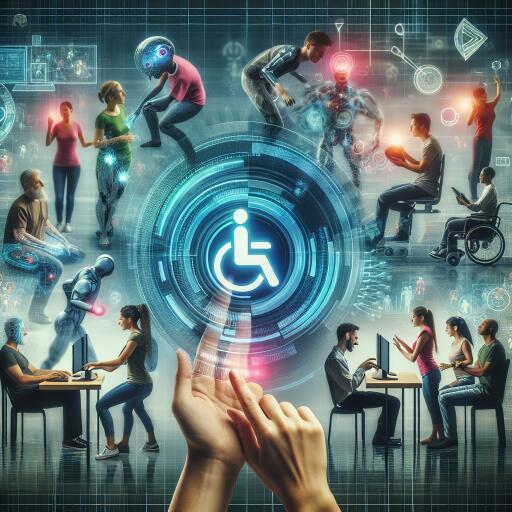Meta and Carnegie Mellon University Join Forces to Enhance Digital Accessibility
In a bold move towards making the digital universe more inclusive, Carnegie Mellon University (CMU) has teamed up with Meta, formerly known as Facebook, to pioneer new pathways in the realm of wearable sensing technology. This innovative collaboration seeks to bridge the gap for individuals with diverse motor abilities, ensuring they too can enjoy the vast offerings of computer-based tasks and gaming worlds.
At the heart of this partnership lies Meta’s cutting-edge surface electromyography (sEMG) wristband prototype. This device, designed with precision, captures the electrical signals emitted during muscle movements in the wrist. These signals are transformed into digital commands, enabling users to interact with computers and gaming consoles, bypassing conventional input devices like keyboards and joysticks. It’s not just an evolution; it’s a revolution in how we perceive and interact with digital interfaces.
The potential of sEMG technology extends far beyond mere concept or speculation. Meta has already showcased the transformative impact this technology could have on user interface engagement. The ongoing research collaboration with CMU aims to further validate and refine this technology to cater to a broader range of user needs and abilities.
Douglas Weber, an esteemed professor in CMU’s Department of Mechanical Engineering and the Neuroscience Institute, has been at the forefront of groundbreaking research that underpins this project. His work has demonstrated that even individuals with complete hand paralysis possess the ability to generate detectable muscle signals in their forearms. Although these signals are not strong enough to prompt physical movement, they hold the key to unlocking new forms of interaction with digital devices for those with spinal cord injuries.
Building on this foundation, Weber’s team, in collaboration with Meta, is delving into ways to harness sEMG technology for everyday computing and immersive mixed-reality experiences. The goal is clear: to fashion a future where muscle signals could serve as the bridge between physical limitation and digital exploration, thereby democratizing technology access for all.
The challenge at hand is not just technological but also deeply human. The project has been greenlit by CMU’s Institutional Review Board and involves participants engaging in specially designed adaptive mini-games. These activities are not just tests but stepping stones towards creating a tailor-made mixed reality universe. One that adapts to the myriad capabilities and preferences of its users, cultivating an environment where digital accessibility is not an afterthought but a foundational principle.
Imagine a virtual setting where physical mobility no longer dictates your level of participation. Through the power of mixed-reality platforms, individuals can manipulate virtual objects, engage with elements, and connect with other users solely through the muscle signals of their own bodies. This is not a distant dream but a tangible future that the CMU and Meta partnership is meticulously crafting.
“In the digital world, people with full or limited physical ability can be empowered to act virtually, using signals from their motor system,” observed Rumaldo, a spokeperson involved in the project. With the integration of Meta’s sEMG technology into the ongoing research and development processes, there’s a palpable enthusiasm for the significant strides being made towards inclusive, accessible human-computer interaction technologies.
This collaboration is more than a testament to technological innovation; it’s a commitment to ensuring that the virtual domains of our digital age are open to all, irrespective of physical capabilities. By harnessing the unique strengths of CMU’s research community and Meta’s technological prowess, a future where digital spaces are truly inclusive is not just possible—it’s within reach.










